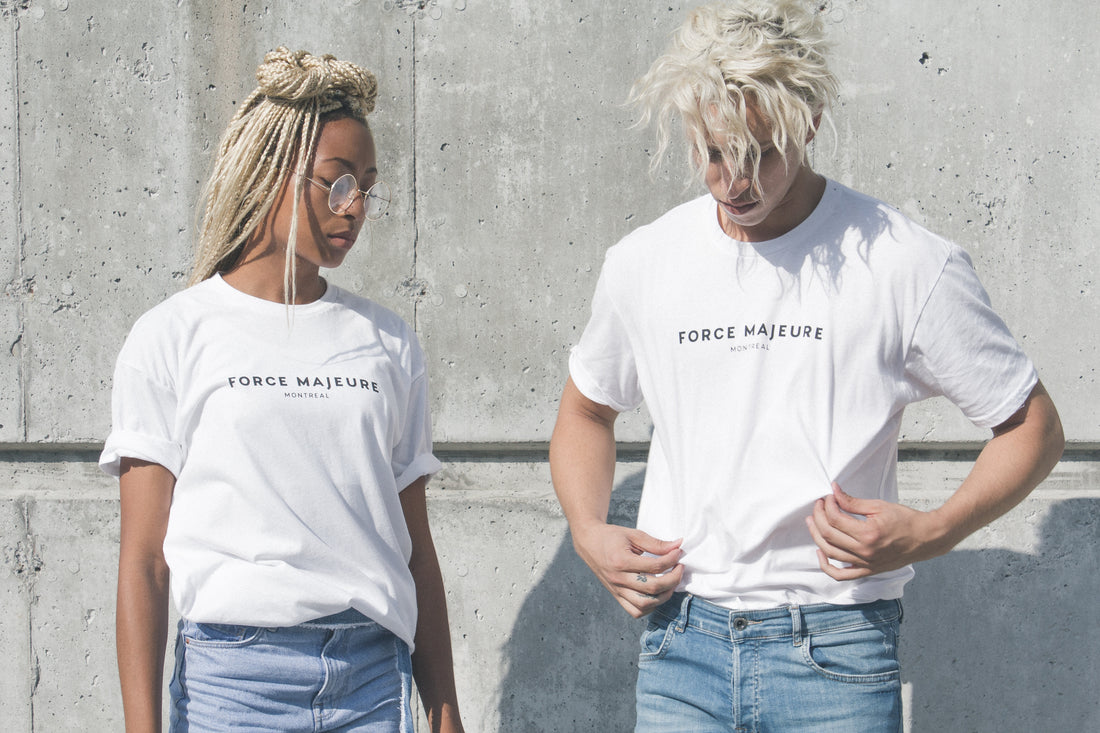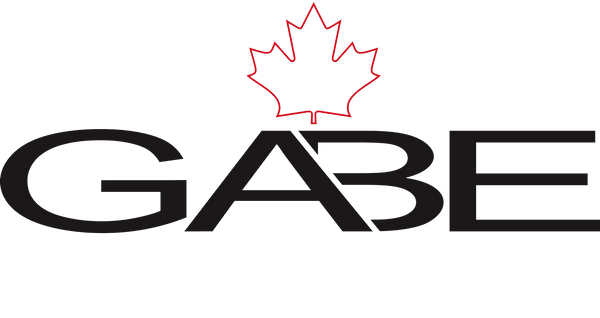
Starting a Clothing Brand: The Definitive 10-Step Guide
Share
You've decided to take the plunge and start a custom apparel business. Your hard drive is loaded up to the brim with design ideas, your friends rave about your keen eye for style, and you’re ready to turn your passion into a movement.
But now arrives the question, where do you start? Sure, maybe you’ve been to fashion school, and you know how to make clothes, but they didn’t teach you how to start a business, business. Or maybe the idea’s been stuck in your head for ages, but you have zero experience, and no idea where to start.
What’s certain, is launching a fashion brand is a challenging, yet rewarding task. It requires a solid plan, some guidance, and incremental steps. But if you stay consistent, trust the process, and dedicate yourself to always learning, you can make it happen.
This step-by-step guide will walk you through the process at a high level, and offer references to other resources that will help you out on your journey.
Step 1: Discover Your Niche and Define Your Brand
Every great fashion brand starts with a clear vision. To stand out, you’ll need to define your brand's unique selling point.
Start by identifying gaps in the market, or areas where customers are underserved. Come up with ways your brand can fill that gap.
Do you want to create sustainable linen dresses? Stylish winterwear? Or well-fitting, ethical basics for streetwear?
Honing in on a niche, and learning what customers in that niche value most, will enable you to communicate your brand as the most sensible choice - and design clothes that people need.

Step 2: Conduct Market Research
After identifying your niche, it’s time to get serious will research. This will help you understand the competition, identify potential customers, and determine the best ways to reach your target audience.
Start by researching existing fashion brands in your niche, and figuring out their value propositions.
Find out whether anyone else already fulfills the need your brand is aiming to solve. If so, bingo, your idea is validated. There’s demand in the market for it.
The next step, is to figure out how to differentiate yourself from the existing competitors. Find and talk to customers; figure out what your competitors do well, and what customers wish they would do better. Usually, one of these pain points will be the perfect place to position your brand’s own selling point.
Continue to study your target audience and their preferences, paying close attention to factors like demographics, shopping habits, and style preferences. This will help you:
Step 3: Develop Your Designs and Collection
With your niche and target audience in mind, it's time to start designing your clothes. Whether you're creating intricate, high-fashion pieces or focusing on versatile blank clothing, your designs should be distinctive and reflective of your brand's identity. Sketch out your ideas and experiment with different fabrics, patterns, and textures.
Your first collection should be small and focused. Your goal at this point should be testing the market, validating/invalidating your assumptions, and iteration. Even with the best research in the world, there are insights you can only reach by diving in head first. So keep your overhead low and find inexpensive distribution channels, while you work through what works and what doesn’t.
Step 4: Create a Business Plan
Well, you would think creating a business plan would be step one. Here’s the thing: early business plans are pretty much always wrong. You need some experience and to test your assumptions in the wild, before it’s possible for you to craft a business plan that’s realistic.
Once you’ve tested the market, creating a detailed business plan will help you stay true to your brand’s vision and communicate with investors, stakeholders, and your customers. Think of it as your compass, guiding your decisions and helping you stack on track.
A good business plan should cover your brand’s mission, and how it’ll communicate that mission to customers. Your target audience and their values. Your product offering and how you will sell, distribute, and market that product. Be sure to revisit your business plan periodically as your brand evolves and your vision changes.
- How to Write A Fashion Business Plan
- The Fashion Business Manuel: An Illustrated Guide To Building A Fashion Brand
Step 5: Think about Funding Options
Financing a clothing brand is a huge topic. And it can look very different depending on the scale of business you’re planning to run, the distribution channels you’re choosing, and how much creative control you’re willing to relinquish.
The important thing, is to give serious thought to your finances. You don’t need $50,000 to start a clothing business. But, if you’re planning to start with $5,000 - make sure your plan aligns with your budget.
You’ll need some starter capital for inventory, production, marketing, and other expenses. For a smaller business, personal savings, small business grants, and investments from friends and family can provide a solid base level of funding.
Also, if you know someone from your network or from school with a compatible vision and personality, you can partner with them and split the startup costs. Small business loans are an option, but you should wait until you’ve made some revenue and are certain about your growth potential before you take the risk.
Talking to investors early can be a good idea so you have a network established for when your business is more mature. But generally, venture investors need to see strong evidence of growth and a solid customer base, with a larger untapped market, before they’re willing to provide funding.
It's important to have a clear understanding of how much money you'll need to launch your brand, as well as a plan for how you'll use those funds well.
How Much Does It Cost to Start a Fashion Brand?
The cost of starting a fashion brand varies significantly, depending on factors like your niche, product offering, and business model. Generally, you'll need to account for expenses like design and development, materials, production, marketing, website development, and shipping.
For a small-scale fashion brand focused on blank clothing, initial startup costs could range from $5,000 to $15,000. This estimate includes inventory, design, online storefront, and business registration costs. High-fashion brands or those with more elaborate designs and production requirements may require significantly more capital.
Keep in mind that these are just general estimates, and the actual cost of starting your fashion brand may vary. To get a clearer picture of the expenses involved, create a detailed budget and financial plan as part of your business planning process.
Step 6: Find Suppliers and Manufacturers
If you’re looking to create custom apparel, sourcing high-quality materials and partnering with a reliable manufacturer is essential for the success of your brand. Start by researching suppliers who specialize in your niche, whether that's sustainable fabrics, high-quality blank clothing, or unique textiles. Request samples and compare prices, quality, and lead times to find the best fit for your brand. Look for manufacturers with integrity and a good reputation, and always ask for references and samples of work before committing to a partnership.
Step 7: Develop Your Brand's Online Presence
A strong online presence is essential for any fashion brand. Clothing is visual, so quality content showcasing your brand, is the most powerful way to reach your audience.
Start by creating a professional website, that showcases your designs, tells your brand's story, and allows customers to easily browse and purchase your products.
Next, establish your brand's presence on social media platforms like Instagram, Facebook, Pinterest, and Twitter. Share engaging content, invest in reels and TikTok, and build a follower base.
Step 8: Plan Your Marketing Strategy
A well-thought-out marketing strategy is crucial for attracting customers and driving sales. Consider a mix of online and offline marketing tactics, such as social media advertising, search engine marketing, content marketing, and public relations. Collaborate with fashion bloggers and influencers, host launch events, and participate in fashion shows to generate excitement around your brand. As your fashion brand grows, continuously analyze your marketing efforts' effectiveness and adjust your strategy as needed.
Step 9: Establish Your Distribution Channels
Choose the right distribution channels for your fashion brand, whether that's selling directly through your website, partnering with boutiques and retailers, or using online marketplaces like Etsy or Amazon. Each channel has its advantages, so carefully consider which options best align with your brand's goals and target audience.
Step 10: Launch Your Fashion Brand and Iterate
With all the pieces in place, it's finally time to launch your fashion brand. But remember, launching is just the beginning. Continuously monitor your sales, customer feedback, and industry trends to refine your designs, marketing efforts, and business strategies. Stay agile and willing to adapt as your brand grows and evolves
